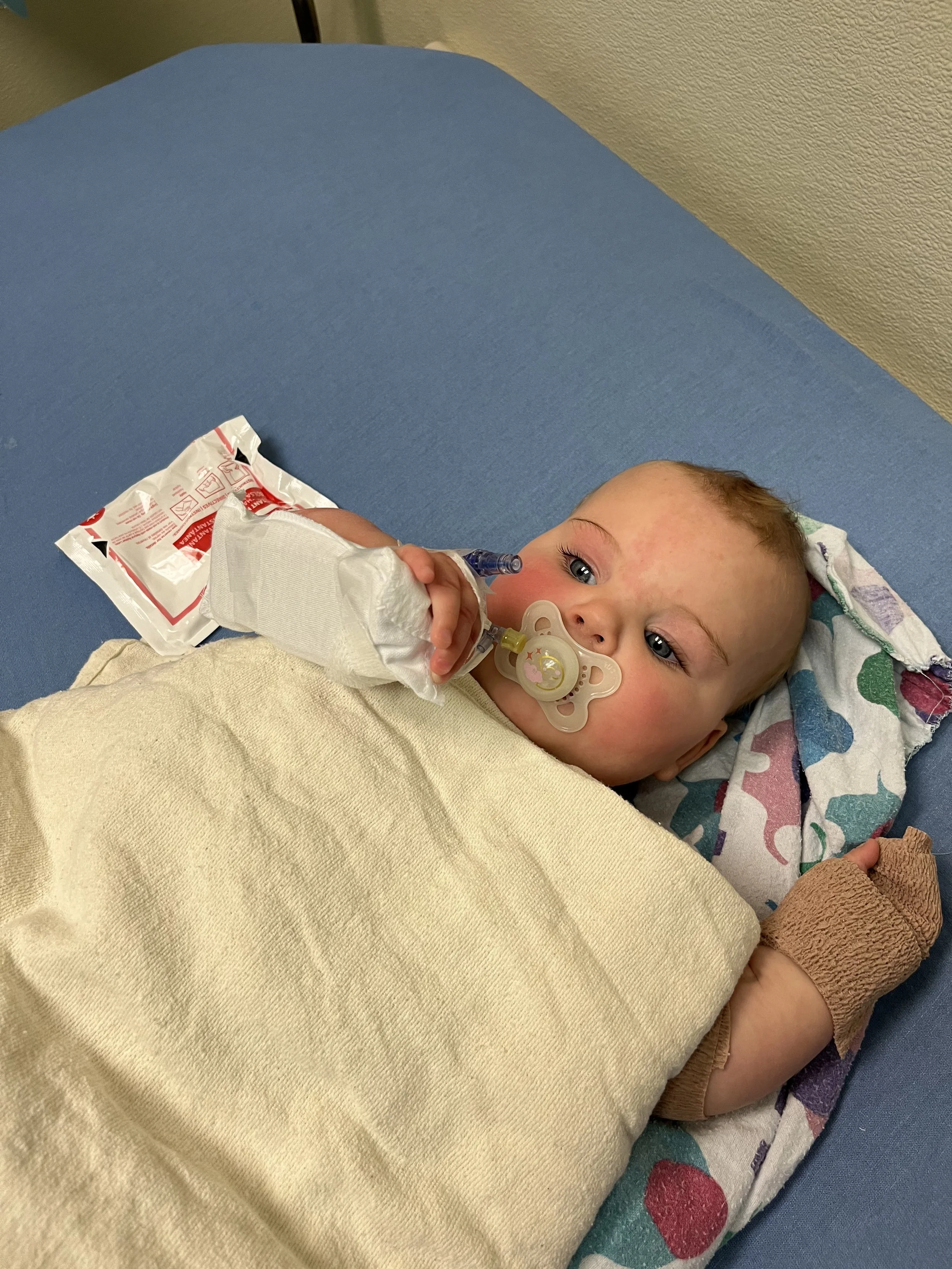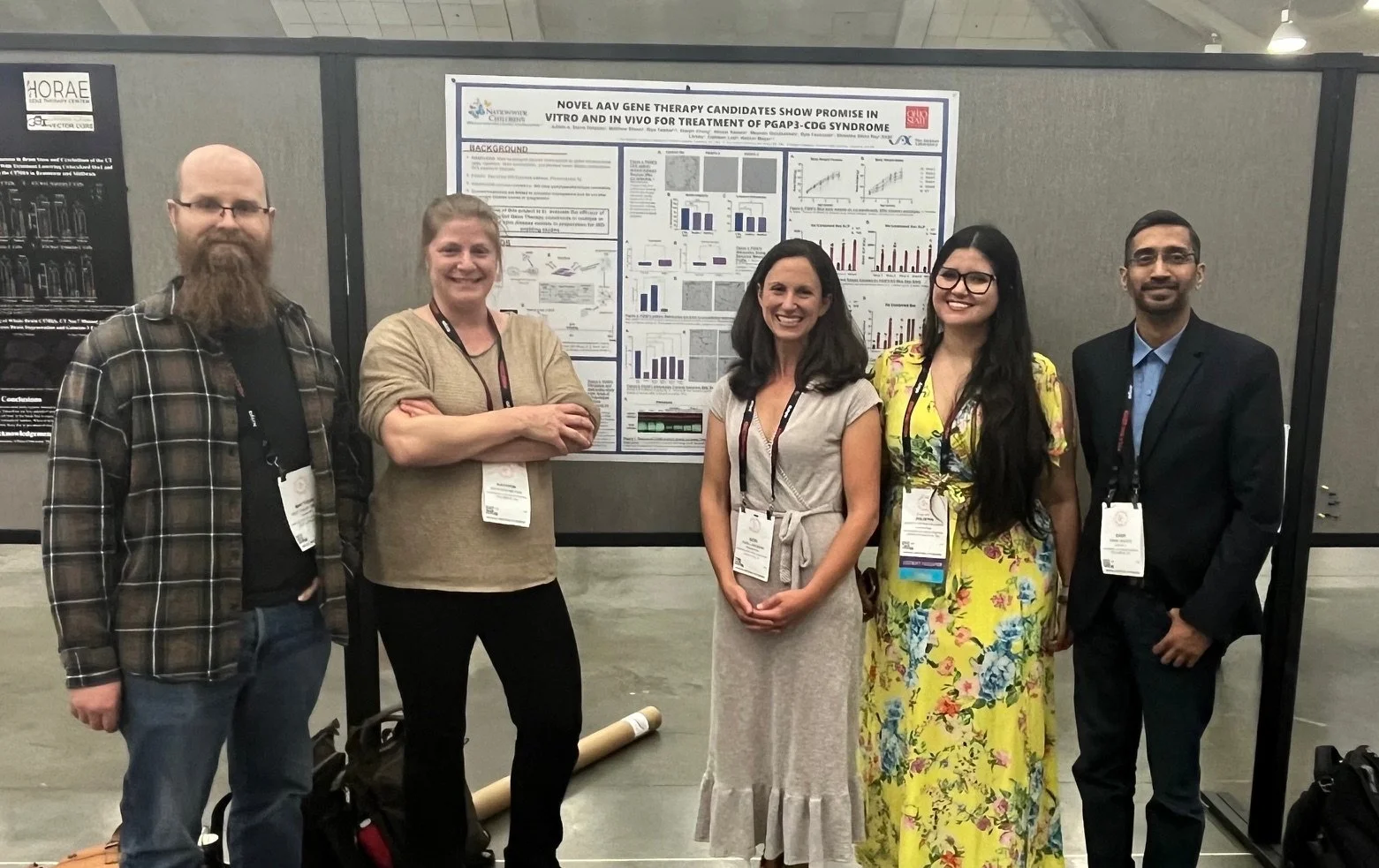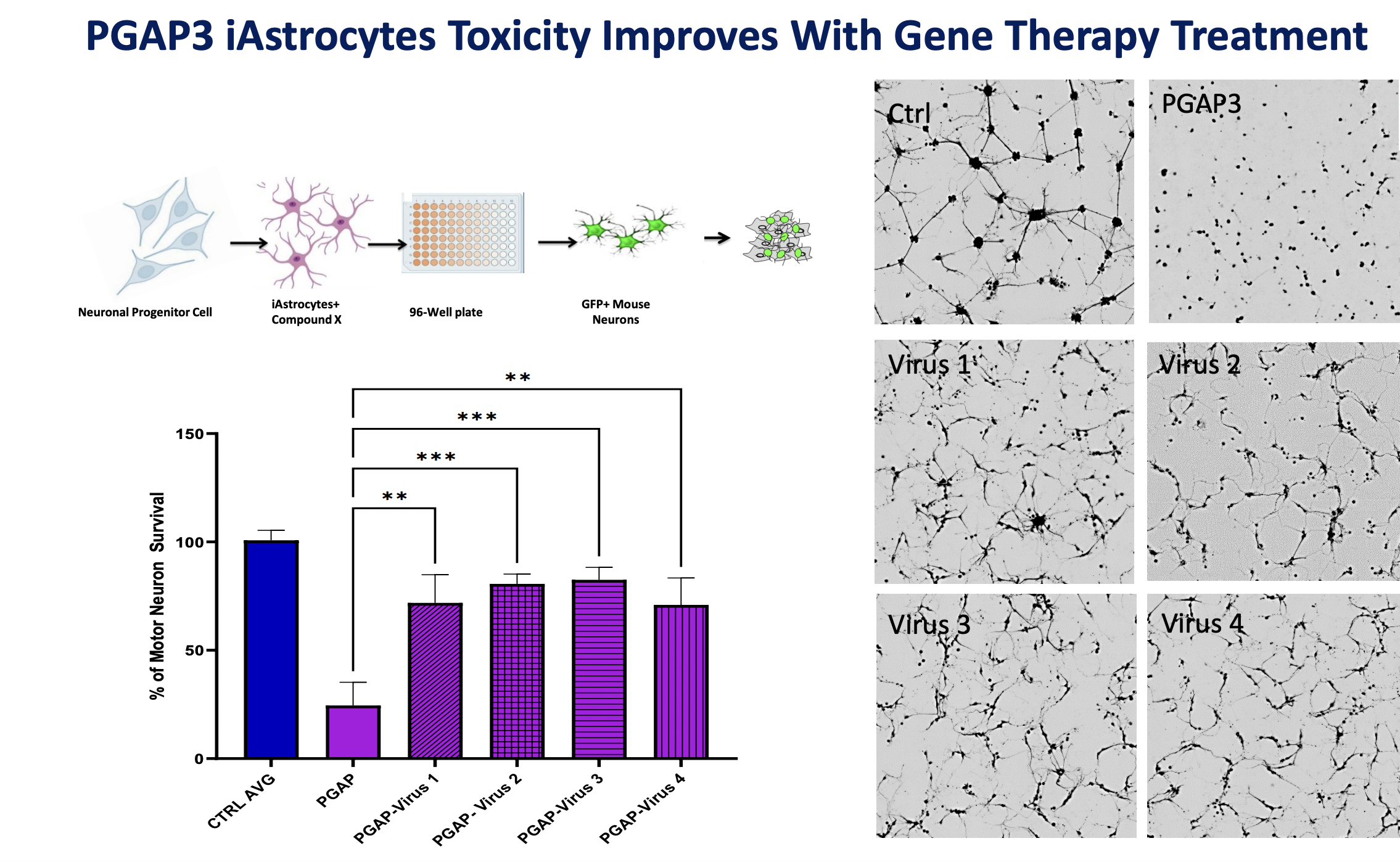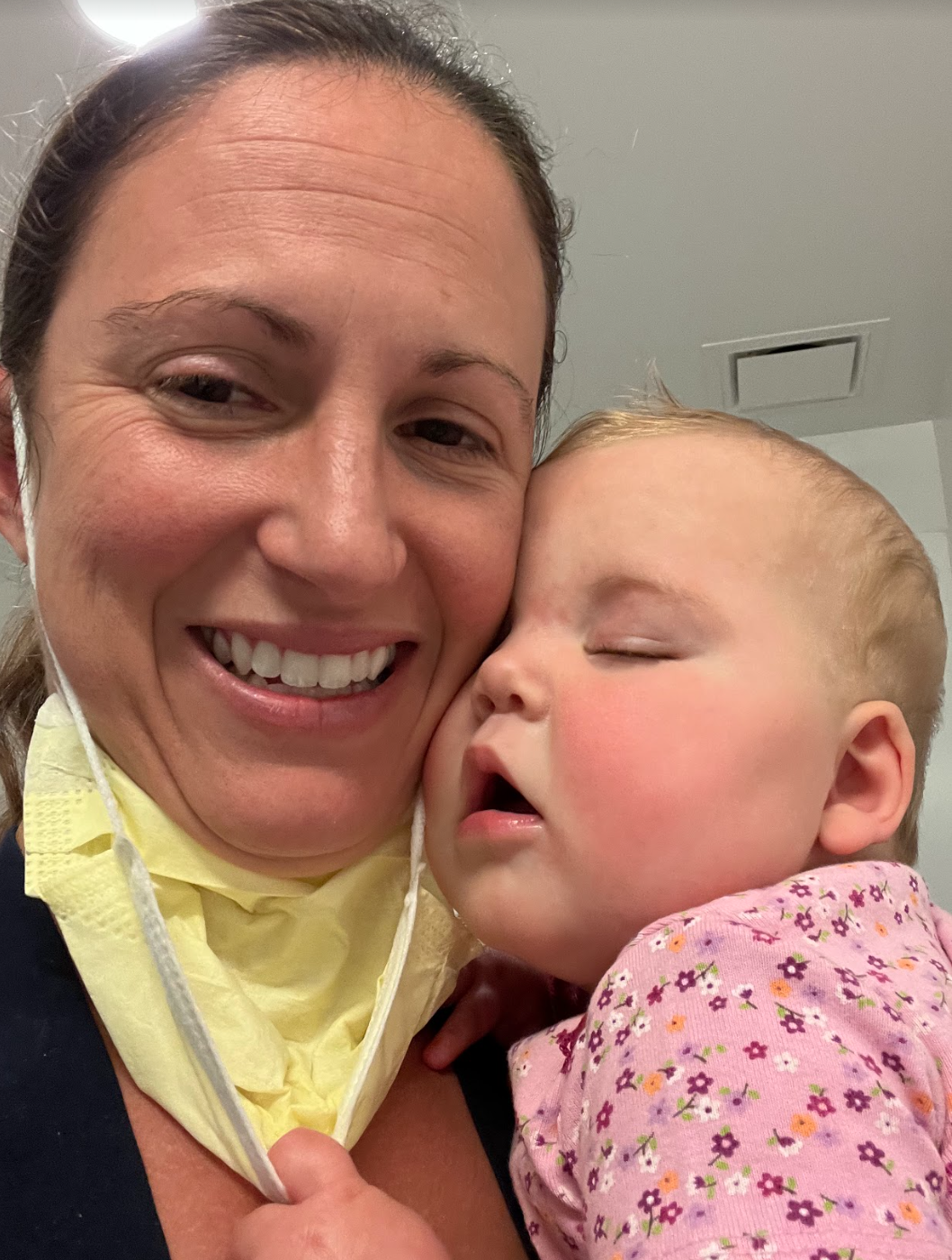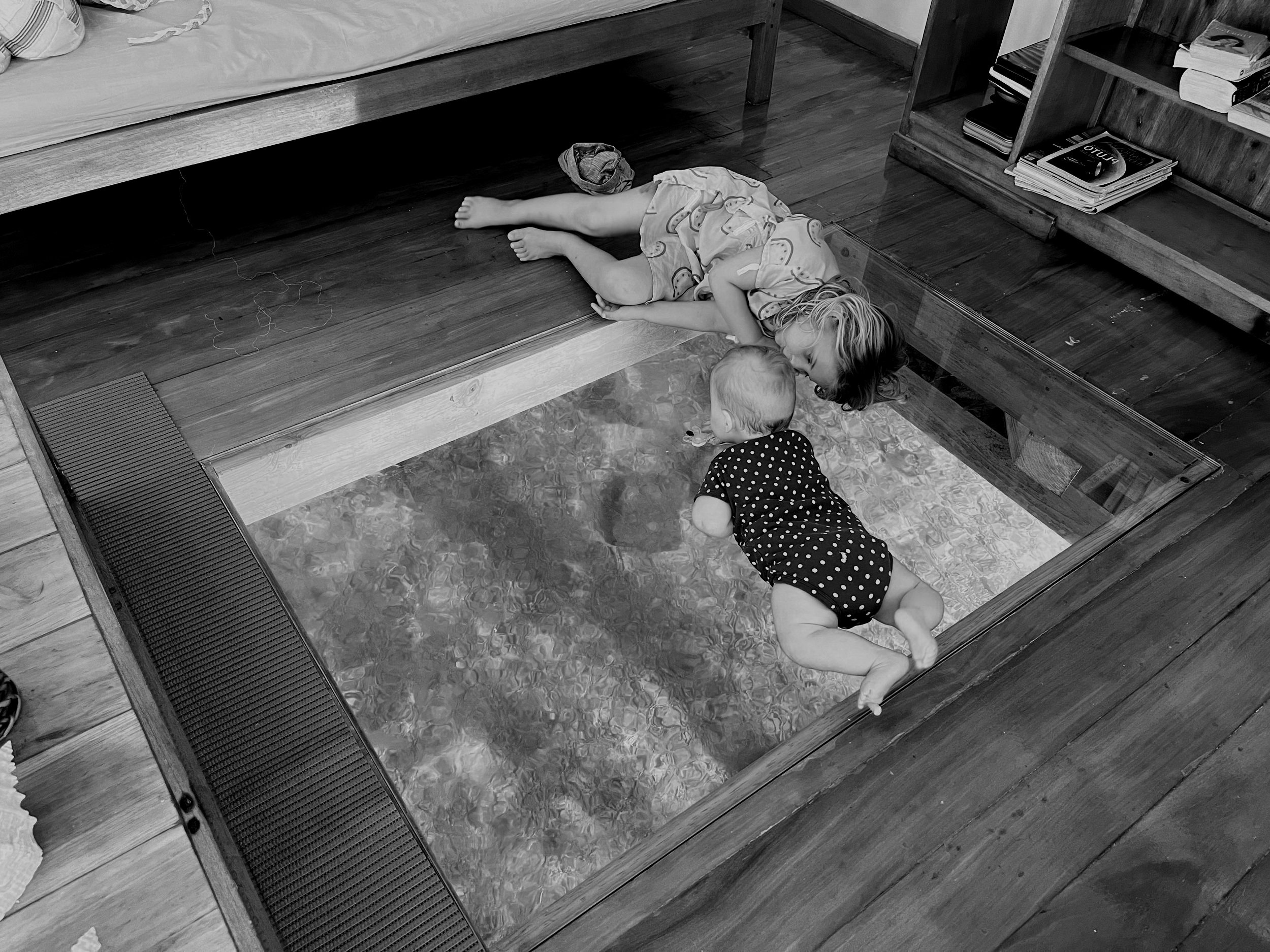
The Path to a Cure
The scientific pathway to a cure has been developed and is already underway. Lucy underwent a biopsy in May, 2022 to donate her cells to create “pseudo-stem” cells called mesenchymal cells. These are growing very well and are being developed into neurons to begin the first of three phases to a cure.
Part I.
Establishment and Characterization of the patient fibroblasts (what are the actual consequences of the mutations on RNA/protein level)
Establish and characterize in vitro model of neurons and induced neuronal progenitor cells (iNPCs) and astrocytes (neurite number and length, co-culture assays, mitochondrial health and metabolics etc.)
Generate 4 gene therapy vectors and test in vitro and in vivo with small scale in mice
Part II.
Gene Therapy to clinic
Generate source plasmids for clinical manufacturing (3 plasmids needed)
Small Scale Safety study
Preparation of “Investigational New Drug” Documents for FDA submission
Part III.
FDA Clinical Trial, Fastrack combined Phase I/III clinical trial (testing both efficacy and and safety) simultaneously.
Lucy and other children receive first dose of a potential PGAP3 cure
Follow-up
Identify 3-5 single gene therapy targets for AAV9 gene therapy
We are committed to curing curable single-gene disorders. While each gene is unique, they all share the fact that these children are missing one single protein in their cells to function appropriately. The science exists to fix this; it just takes passion, focus, and the funding to treat each one.
“Our mission is to fund cures for these single gene disorders and help them reach children, no matter where they live in the world.”
May 2024
Exciting news: We have reached the “Proof of Concept” phase of our research! The gene therapy cures the PGAP3 mice!
PGAP3 mice show neurologic abnormalities, including an abnormal “clasping” phenotype. The gene therapy fixes this and makes them neurologically like the wild-type mice! It also lowers the alkaline phosphatase in their blood, a known marker of PGAP3 disease.
This means that we have created a gene therapy medication that is not only safe, it cures patient cells (making them look and behave like normal cells) and corrects the neurologic deficits of the PGAP3 mice. A substance exists in the world that could cure Lucy and other kids with PGAP3. This blows my mind, and feels like so much progress in two years.
Others are also impressed: our research was presented at the major gene therapy conference this year (American Society of Gene and Cell Therapy) and it won the Outstanding Poster Award! We are so grateful to all of the incredible scientists working on this devastating disease, and to our generous donors, who have enabled this rapid progress toward a cure!
August 2023
THE GENE THERAPY WORKS ON LUCY’S CELLS!
Such amazing news: the gene therapy works on Lucy's cells! All 4 of the vectors we tried improve survival of her neurons in the lab and make them connect/communicate much more normally! I am crying as I look at these images, knowing what it means for Lucy and other kids with PGAP3.
Stayed tuned for end of October, when we'll know whether it works on the PGAP3 mice. The Jax Lab recently let us know they are showing a robust phenotype - they have elevated alk phos just like kids with PGAP3 and have an abnormal grasping reflex, so it should be easy to tell if the gene therapy is working!! At that point, we'll need about $500K more to start CLINICAL MANUFACTURING of the gene therapy medicine that is actually going to be given to our kiddos.
April 23, 2023
So many exciting developments to share from the last few months, thanks to our generous donors!
Drug repurposing: Working with Perlara and UCSF, we completed a 12,000 compound screen of the PGAP3 knockout yeast (yeast that lack a functional PGAP3 gene, just like Lucy). These yeast generally grow poorly compared to typical yeast. Several of these compounds helped the PGAP3 yeast grow normally, including a few that may be very safe (eg, gold nanoparticles, or a blood pressure drug called lercanidipine). The next step will be to test these compounds on Lucy’s cells to see if they also help them function more normally!
Read the full report. A collaboration among Moonshots for Unicorns, UCSF School of Medicine, and Perlara!
Gene therapy: Four experimental gene therapy vectors have been successfully created. The MOST exciting news: Two of them were given to a couple of wild type (regular) mice back in January and those mice are still doing JUST FINE – acting, living, behaving completely normally! This is huge because it means the gene therapy for PGAP3 is likely safe – you can give it to a healthy animal and the animal is still healthy! We should hear in the next few weeks whether the gene therapy is both safe and efficacious for Lucy’s cells growing in the lab – does it help her neurons and astrocytes behave as they should, instead of clumping and dying? Finally, the gene therapy vectors have also been sent to Jax Labs in Maine, where they will be given to the PGAP3 knockout mice. We should know by the end of the summer whether the mice are cured by the gene therapy – stay tuned for updates!!
- Zach & Geri
November 4, 2022
Wow! What a few months! There has been incredible progress both at the Moonshots’ San Francisco lab in partnership with UCSF and separately with Dr. Meyer’s gene therapy team at Nationwide Children’s. In fact, on a single day, both scientific teams which approach PGAP3 differently (one from Lucy’s own cells turned into brain cells, the other with a model of PGAP3 cells using yeast) discovered the same mechanism of disease and types of medications which could help Lucy and children with PGAP3.
With the twin groundbreaking discoveries, we were confident that we could trust the medicines that the SF team found helped the PGAP3 yeast. Given that a few of them were safe and over-the-counter and with the guidance of Lucy’s clinical team, we started giving these to Lucy within 48 hours of the discovery.
Lucy previously could never walk or stand independently. One week later, Lucy took her first steps!
Read more on the full story here!
- Zach & Geri
Lucy Takes Steps
After 2 weeks on repurposed medicine, Lucy is beginning to take multiple (yet still clumsy) steps! A big improvement!
August 26, 2022
There are so many exciting developments over the past month! First, Dr. Kathrin Meyer’s lab has discovered many groundbreaking findings on PGAP3 in terms of neuron and astrocyte function in PGAP3. From Lucy’s cells, they have developed neurons, astrocytes, fibroblasts and other cells. Every day, we are learning of true DISCOVERIES about PGAP3, both small and large. While we had to agree to some legaleze and contracts to fund rapid translational gene therapy research for PGAP3 and it unfortunately prevents us from reporting the scientific details of each discovery, we can say that the mitochondria (cellular power plants) in certain types of brain cells are significantly affected. This is known as a “mitochondrial disorder,” something PGAP3 was never previously considered, and helps explain why Lucy and other PGAP3 kids do poorly in heat and when sick or physiologically stressed (harder on the mitochondria - think of driving up a mountain in hot weather - a lot harder on the engine than flat ground in cool temps!).
Separately, Moonshots has funded an independent, family supported “pop-up” drug repurposing lab in San Francisco to develop PGAP3 specific yeast. Four other rare-disease families / foundations have partnered together to support a full-time scientific team to develop these “avatars” and we’re happy to report that we’ve signed with our alma mater, UCSF, to perform the highly complex high-throughput drug repurposing screening of 6,000 medicines! We expect to have results in just a few weeks time! We also want to be 100% transparent with all the science and welcome any feedback or scientific evaluation - raw results here! Onward and upward!
- Zach & Geri
July 14, 2022
We’re so excited to announce that the Jax Center for Precision Genetics (JCPG) has partnered with Moonshots for Unicorns! The Jackson Lab is a non-profit and independently funded organization that brings over 90 years of experience and nearly 3,000 faculty, staff and scientists with expertise in modeling and identifying effective treatments and cures. In fact, their mission is to accelerate the discovery of cures. After a thorough scientific review including a Steering Committee evaluation, the leading scientists believe PGAP3 to be a perfect fit. I can’t express how important this is. This brings the possibility of a PGAP3 cure one giant step closer. Furthermore, they have already identified a mouse model for PGAP3 and will soon begin the process of developing and then begin testing therapeutic medicines and ultimately PGAP3 gene therapy. We couldn’t be more grateful. While we still need your ongoing support, this is a huge step forward for every child with PGAP3!
-Zach


